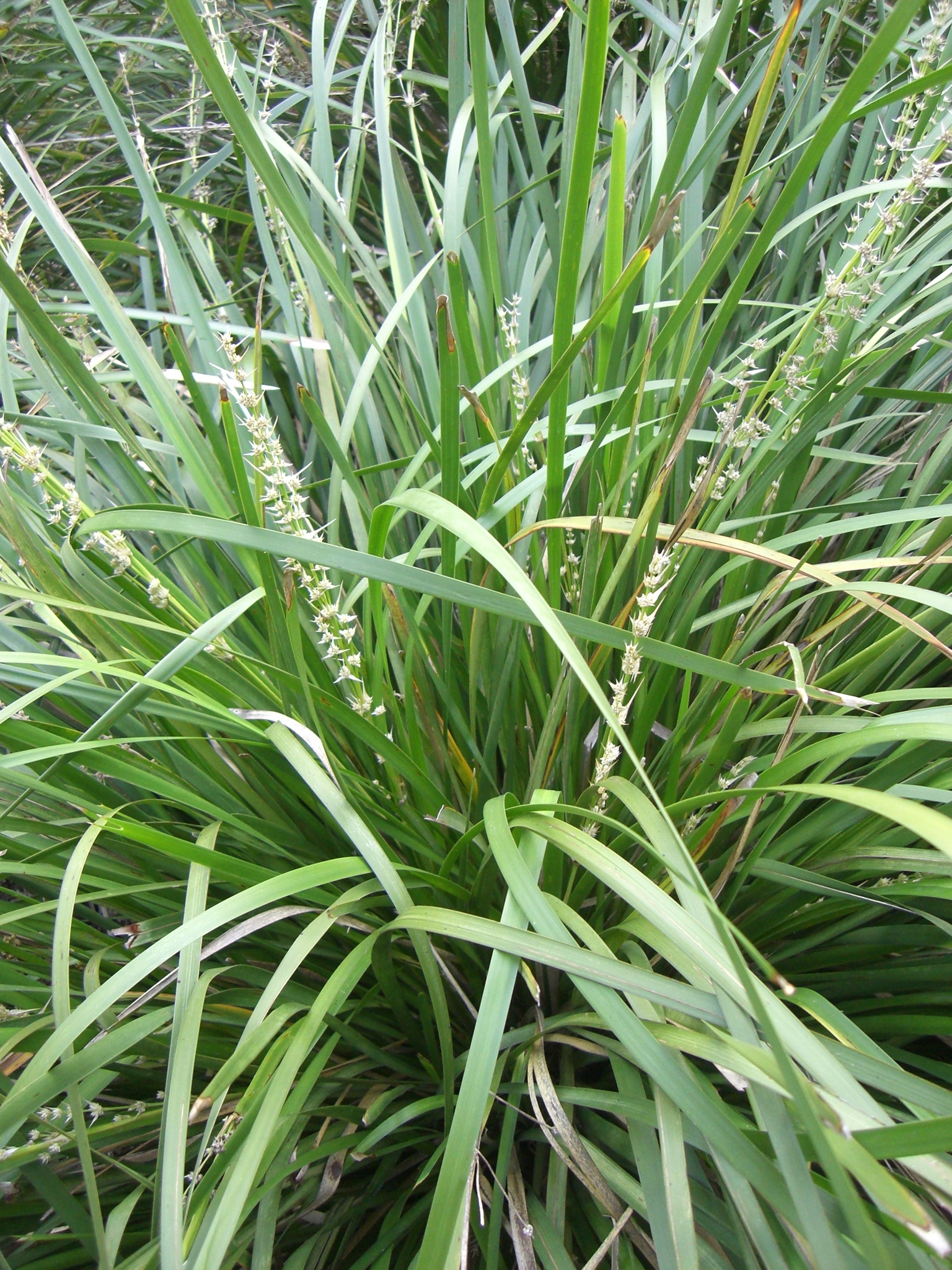
Perennial, clump-forming, rhizomatous shrub to about 1 m. Leaves numerous, linear, flat, with 2-3 minute sub-apical teeth. Inflorescence a branched panicle up to the length of the leaves, branches usually in clusters of 2 per node, bracts large, linear, stiff and sharp-pointed. Flowers numerous, clustered; spring to summer. Tepals to 5 mm long, not spreading, dull yellow to cream, inner 3 longer.
E Australia and Tas.
L. hystrix (R. Br.) L. Fraser &Vick., Mat Rush from NE Australia to N NSW is a perennial clump-forming, rhizomatous shrub to about 1 m. Leaves numerous, linear, flat with 2-4 minute sub-apical teeth. Inflorescence a doubly-branched panicle up to the length of the leaves, branches usually in clusters of 4 per node, bracts large, linear, stiff and sharp-pointed. Flowers numerous, clustered; spring to summer.Tepals to 5 mm long, not spreading, dull yellow to cream, inner 3 longer.
L. leucocephala (R. Br.) Ewart, Woolly Mat rush, Iron grass from mainland Australia is a perennial clump-forming, rhizomatous shrub to about 60 cm. Leaves numerous, narrow-linear, without teeth. Inflorescence a spike-like raceme shorter than the leaves, bracts densely woolly-hairy. Flowers numerous, clustered, embedded in bract hairs, sweet-scented; winter to spring. Tepals to 7 mm long, spreading apically, cream, inner 3 longer.
Source: (2005). Laxmanniaceae. In: . Horticultural Flora of South-eastern Australia. Volume 5. Flowering plants. Monocotyledons. The identification of garden and cultivated plants. University of New South Wales Press.
